For warehouses and light industrial teams, Q4 is often crunch time. Orders surge, deadlines loom and the pressure to keep the lines moving can push everyone to their limits.
Seasonal warehouse staffing offers a solution to this challenge. Rather than overworking your permanent team with excessive overtime, strategic use of temporary workers during peak periods helps you meet Q4 demands while protecting your core employees from burnout.
Workloads tend to increase as year-end goals hover – creating a perfect storm for overtime. While extra hours can help meet deadlines, excessive overtime can have serious consequences for both employees and businesses.
Burnout, reduced productivity, higher turnover and compliance issues are real risks when organizations push teams beyond sustainable limits. For managers in warehouses, distribution centers and light industrial facilities, the challenge is finding a balance between meeting business needs and protecting employee well-being.
The Risks of Excessive Overtime
Employees who work extended hours consistently are more likely to experience physical and mental exhaustion. Studies show that employees who work 60 or more hours a week are more likely to experience health issues like depression, heart disease and stroke, according to the World Health Organization.
Excessive overtime is also linked to other negative outcomes, including a 23% higher likelihood of accidents for employees who work more than 60 hours a week and a five times greater risk of being in a car accident.
While overtime work for your employees may seem like a logical approach to workforce planning in Q4, it’s important to remember that longer hours don’t always mean more output. A Stanford study showed that after a certain point, productivity per hour declines, quality suffers and mistakes become more frequent.
Researchers found that after a:
- 50-hour workweek, productivity begins to fall off significantly.
- 55-hour workweek, the drop in productivity becomes severe.
- 70-hour workweek, the hours worked beyond the 55-hour mark yield minimal to no results.
Persistent overwork also can erode morale, leading to disengagement and higher turnover rates. And as any business owner knows, replacing staff is expensive and time-consuming, especially during a peak season when experienced employees are critical to maintaining operations.
Seasonal Warehouse Staffing Strategies for Q4
Achieving balance between productivity and your employees’ well-being during the fourth quarter doesn’t mean sacrificing performance. With proactive planning and strategic use of seasonal warehouse staffing, your company can maintain productivity while protecting employees from burnout.
To help manage Q4 demands at your company, here are key strategies to consider:
- Use data to predict peak demands
- Implement fair scheduling practices
- Use temporary or seasonal staff strategically
- Monitor overtime trends in real-time
- Prioritize employee well-being programs
- Optimize workflow and cross-train employees
- Set realistic goals and manage expectations
- Encourage open communication
Use Data to Predict Peak Demands
Effective Q4 planning starts months in advance. Assess historical data to predict peak demand periods, order volumes and staffing needs. Forecasting enables managers to identify where overtime may be necessary and where additional resources, such as temporary staffing solutions, can be used to relieve pressure. Advanced planning also allows for training and onboarding temporary employees in a timely manner, ensuring they can contribute efficiently when demand surges.
Implement Fair Scheduling Practices
Transparent, equitable scheduling reduces employee frustration and prevents fatigue. Rotate shifts and overtime fairly across the team to avoid overburdening a few individuals. Offer flexibility where possible, such as voluntary overtime or staggered shifts, so employees can manage work-life balance. Communicate scheduling changes in advance, giving employees time to plan around their personal commitments.
Use Temporary or Seasonal Staff Strategically
Hiring seasonal warehouse staffing is an effective way to manage seasonal peaks without overloading permanent employees. In light industrial settings, temporary workers can handle routine tasks like packing, sorting or shipping, freeing core staff to focus on critical operations. Temporary hires also can be evaluated for potential long-term roles, creating a pipeline of trained personnel for future peak seasons.
Monitor Overtime Trends in Real-Time
Data-driven monitoring is essential for preventing overwork. Track hours worked per employee, department or shift to identify patterns of excessive overtime. Software tools or time-tracking systems can highlight employees approaching maximum hours or alert managers to spikes in workload. By keeping a pulse on overtime trends, managers can intervene before fatigue becomes a serious issue.
Prioritize Employee Well-Being Programs
Even during high-demand periods, small investments in well-being can pay big dividends. Encourage regular breaks, provide ergonomic equipment and ensure a safe working environment. Some facilities implement wellness programs like mindfulness sessions, stretching exercises or short recovery periods to help employees recharge. Recognition programs and clear communication also boost morale, reminding staff that their hard work is valued.
Optimize Workflow and Cross-Train Employees
Streamlining processes can reduce unnecessary overtime. Examine workflows to identify bottlenecks, redundant tasks or inefficiencies that slow down operations. Cross-training employees allows teams to cover multiple roles, providing flexibility when unexpected demand appears. A well-trained workforce can redistribute tasks more effectively, reducing the need for extended hours.
Set Realistic Goals and Manage Expectations
While hitting Q4 targets is important, setting unrealistic expectations can drive unsustainable overtime. Break down goals into achievable milestones, and communicate clearly with both staff and clients about deadlines. Emphasize quality over speed when necessary since mistakes due to fatigue can cost more than the extra time spent correcting them.
Encourage Open Communication
Creating a culture where employees feel comfortable discussing workload concerns is crucial. Managers should encourage feedback about scheduling, task load and fatigue. Listening to staff not only helps prevent burnout but can also uncover opportunities to improve processes or allocate resources more efficiently.
The Business Case for Balance
Q4 is an intense season for light industrial operations, and overtime is often unavoidable. However, unchecked overtime can lead to poor employee well-being, decreased productivity, and compliance risks for your business.
When margins are tight and deadlines are critical, sustainable workforce management allows companies to deliver results without compromising safety or employee satisfaction.
By implementing strategies like strategic use of temporary staff and monitoring overtime trends, you can sustain performance while protecting your teams. In the end, balancing productivity with employee care goes beyond surviving Q4 – it’ll help you create a healthier, more efficient, and more motivated workforce year-round.
As you explore your options for seasonal warehouse staffing or filling other talent needs, remember the Hire team. We deliver the right talent into the right position – any time of the year.

